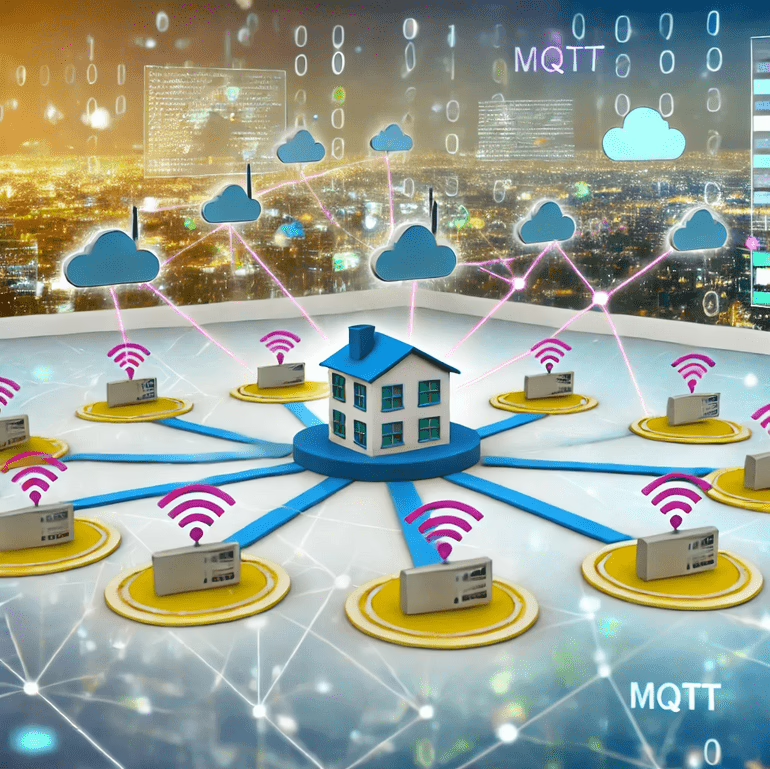The Internet of Things (IoT) has revolutionized the way devices communicate and interact with each other, enabling smarter and more connected systems. At the heart of many IoT deployments is MQTT (Message Queuing Telemetry Transport), a lightweight and open messaging protocol designed for efficient communication between devices in constrained environments. Originally developed by IBM in the late 1990s, MQTT has become widely adopted due to its simplicity, low bandwidth usage, and support for real-time communication. In this blog post, we will explore the key features and concepts of MQTT, its applications, and how Curate Consulting Services can assist in finding specialized talent for your staffing needs.
Key Features and Concepts of MQTT
Publish/Subscribe Model: MQTT follows a publish/subscribe model, which decouples the communication between devices. In this model, publishers send messages to a broker, and subscribers receive messages from the broker based on their topics of interest. This scalable approach allows devices to communicate without needing to know each other, simplifying the overall system architecture.
Broker-Based Architecture: The broker is a central component in MQTT’s architecture. It acts as an intermediary between publishers and subscribers, managing the flow of messages, ensuring delivery, and handling subscriptions. By routing messages based on topic subscriptions, the broker facilitates efficient and reliable communication.
Topics: Topics in MQTT act as channels or subjects to which messages are published. They provide a way to categorize and filter messages, making it easier for subscribers to receive relevant information. Publishers send messages to specific topics, and subscribers express interest in those topics to receive updates.
Quality of Service (QoS) Levels: MQTT supports different levels of Quality of Service (QoS) to ensure message delivery reliability:
- QoS 0 (At most once): The message is delivered at most once without confirmation.
- QoS 1 (At least once): The message is delivered at least once, with confirmation sent by the receiver.
- QoS 2 (Exactly once): The message is delivered exactly once using a four-step handshake process.
Lightweight Protocol: MQTT is designed to be lightweight, making it suitable for devices with limited processing power and bandwidth. The protocol header is small, minimizing overhead and reducing data transmission requirements.
Retained Messages: Retained messages are a feature of MQTT where the broker stores the last message sent on a specific topic. When a new subscriber subscribes to that topic, it receives the last retained message, ensuring it has the most recent information.
Security: MQTT can be used with Transport Layer Security (TLS) to encrypt communication between devices and the broker. Authentication mechanisms, such as usernames and passwords, can also be employed to secure MQTT communication, ensuring data integrity and confidentiality.
Persistent Sessions: MQTT supports persistent sessions, allowing clients to establish sessions with the broker that persist even if they temporarily disconnect. This ensures that clients receive messages that were sent while they were offline.
Compatibility: MQTT is agnostic to the underlying network technology, making it suitable for various communication mediums, including TCP/IP, WebSocket, and more. This flexibility allows MQTT to be used in a wide range of applications.
How MQTT Works
Signal Capture: Probes connected to the logic analyzer capture digital signals at specific points in the circuit. The signals are then fed into the logic analyzer’s input channels.
Sampling: The logic analyzer samples the digital signals at a high frequency, capturing the binary states (0 or 1) of each channel over time.
Data Storage: The captured data is stored in memory, allowing users to review and analyze the digital signals over a specified time duration.
Triggering: Trigger conditions are set to capture specific events or patterns. When the trigger conditions are met, the logic analyzer captures and stores the relevant data.
Analysis and Display: The captured data is analyzed and displayed on the logic analyzer’s screen. Timing diagrams, state diagrams, and protocol-decoded information are commonly used visualizations.
Common Uses of MQTT
Digital System Debugging: Logic analyzers are indispensable for debugging digital systems, helping identify issues such as timing problems, signal integrity issues, and protocol errors.
Embedded System Development: In the development of embedded systems, logic analyzers are used to verify the correct operation of microcontrollers, FPGAs, and other digital components.
Communication Protocol Analysis: Logic analyzers are used to analyze and decode digital communication protocols, ensuring proper data exchange in applications like serial communication and bus protocols.
FPGA and ASIC Development: Engineers working on Field-Programmable Gate Arrays (FPGAs) and Application-Specific Integrated Circuits (ASICs) use logic analyzers to validate the functionality and performance of their designs.
Timing Analysis: Timing analysis is a crucial aspect of digital design, and logic analyzers provide detailed insights into the timing relationships between different signals in a digital system.
The Role of Curate Consulting Services in Finding Specialized Talent
As the demand for skilled professionals in digital systems and electronics continues to grow, finding the right talent becomes increasingly challenging. This is where Curate Consulting Services excels. Our expertise lies in connecting businesses with specialized talent that meets their specific needs. Whether you are looking for engineers proficient in using logic analyzers or experts in digital circuit design, Curate Consulting Services can help.
Why Choose Curate Consulting Services?
Extensive Talent Network: We have an extensive network of skilled professionals in various fields, including digital systems, electronics, and embedded systems. Our talent pool includes experts experienced in using logic analyzers for debugging, testing, and development.
Customized Staffing Solutions: We understand that every business has unique staffing requirements. Our customized staffing solutions ensure that you find the right talent that aligns with your specific needs and project goals.
Industry Expertise: Our team possesses in-depth knowledge of the digital systems and electronics industries. This expertise allows us to identify and connect you with candidates who possess the skills and experience necessary to excel in your projects.
Streamlined Hiring Process: We simplify the hiring process by handling everything from candidate sourcing to interviews and onboarding. This allows you to focus on your core business activities while we take care of your staffing needs.
Quality Assurance: At Curate Consulting Services, we prioritize quality. We thoroughly vet candidates to ensure they meet your requirements and maintain high standards of professionalism and expertise.
Conclusion
MQTT is a powerful protocol that has become a cornerstone in IoT communication. Its simplicity, efficiency, and ability to support real-time communication in constrained environments make it an ideal choice for a wide range of applications. Understanding the key features and uses of MQTT can significantly enhance your ability to implement and manage IoT systems effectively.
Curate Consulting Services is dedicated to helping businesses find the specialized talent they need to thrive in the competitive landscape. Whether you require engineers skilled in using MQTT or other experts in the field, our customized staffing solutions and industry expertise ensure that you find the right fit for your team. Let us help you build a team of professionals who can drive your projects to success.



